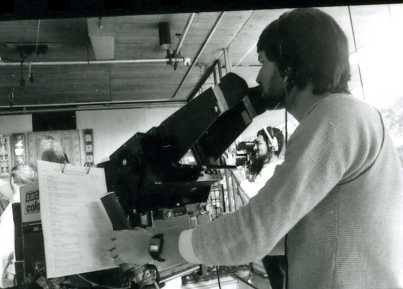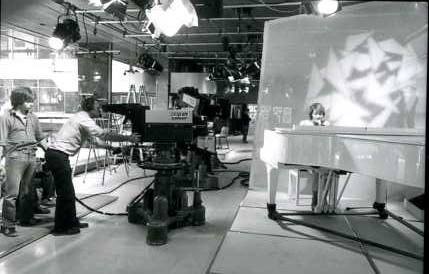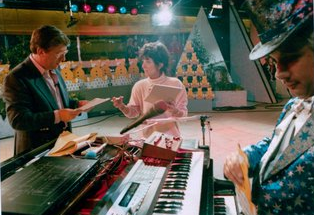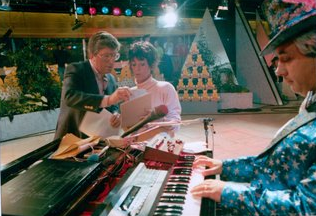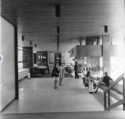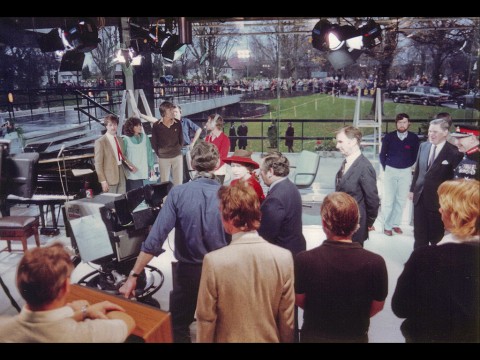Studio Lighting Studio B
Studio B lighting was a much simpler setup. All the lights were on sliding pantographs, which had tracks running from one end of the studio to the other. The luminaires were mainly dual source again, but from what I remember the lighting circuits had switches on a panel in the studio, to allocate them to faders on the desk in the gallery. There was no memory system, and all changes had to be done manually. Considering the complexity of some of the programmes to be made in Studio B it was a testament to the ingenuity of the TM’s in arranging the lighting. One of the problems was that the height of the studio was insufficient in many cases to get the lights as high as would have been liked, and there was a real danger in some cases of tall people walking into lights where they needed to be fairly low to obtain the desired lighting effect.
Studio Lighting the Foyer
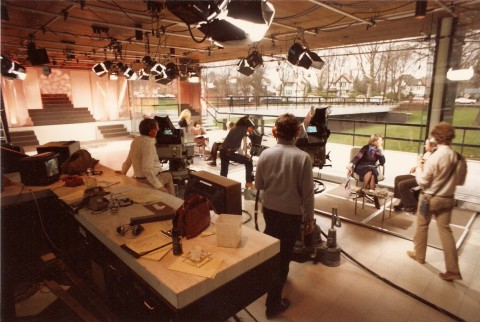
Photo by Robin Sunderland, no reproduction without permission
Pebble Mill at One Lighting, was all fixed, and before Gallery C was built there were no dimmers or lighting control. A series of scaffold bars were suspended from the foyer ceiling, and all the lights rigged on those or on floor stands. The “soft lights” were basically a set of 6 car headlight type lamps, and the key lights a variety of spotlights including some CSI discharge lamps. The latter had the problem that if you turned them off e.g. to reposition them, you had to wait 20 minutes before they could be turned on again.! The TM had to guess on how bright to light the area based on what he expected to weather to be like at transmission time. Too bright on a dull day would make outside look like night, too dark on a bright day would make the outside burn out on the cameras. The one time the TM could never win was when the weather was variable, with sun and clouds.
I happened to be on the racks on one such particular day. The programme started well enough with bright fairly sunny conditions, and lighting to match. About 5 minutes into the programme dark clouds came across and it started snowing, It became so dark outside that the cameras outside were wide open with master gain added in order to get a bright enough picture. The shots on the inside cameras looked as if it was night time outside. After half an hour, the snow stopped, (now about 4inches deep!) and the sun came out again. The inside cameras now looked as if there were no lights on, as the sun reflecting on the snow provided a backlight many times brighter. The outside cameras were now well stopped down, with no master gain. This was the day that there was a parade of Easter bonnets! A group of lightly dressed girls in Easter bonnets were now parading in the snow trying not to look cold, as the programme came to a close. At the end the director said to the TM, “That’s just one of those days where you can never win!”
Ray Lee
